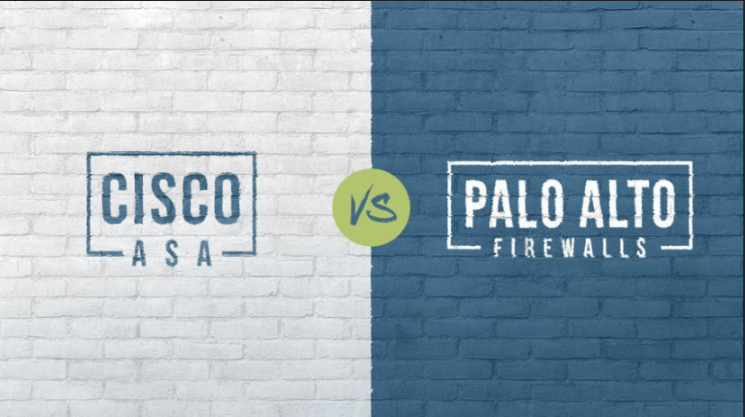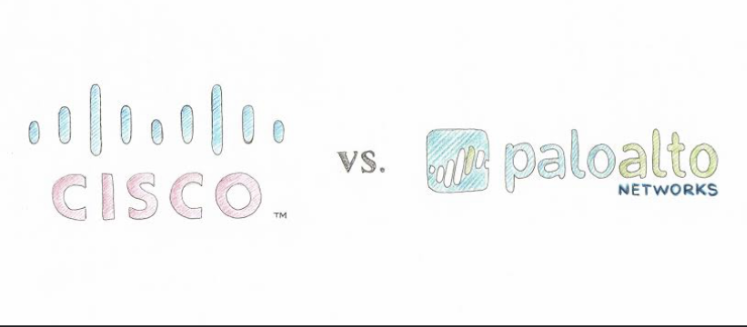Cisco’s and Palo Alto Networks’ next-generation firewalls (NGFWs) all appear on eSecurity Planet’s ranking of the top 10 NGFW vendors, as well as both are well prepared to satisfy enterprise security demands. The following is a comparison of the characteristics and benefits of each solution, as well as a discussion of the significant distinctions between them. With the Palo Allto Course you can learn more about it.
The Firepower brand is what Cisco calls their state-of-the-art firewalls. Firewall options for service providers as well as high-performance data centers (Firepower 9300) are at the top end of Cisco’s Firepower hardware appliance lineup, which also includes products designed to protect small businesses and branch locations (Firepower 1000) and large branches, campuses, as well as data centers (Firepower 2100 and Firepower 4100).

In a comparable manner Palo Alto offers its very own PA Series tangible firewalls, that offer protection for an extensive variety of enterprise and company activities such as branch as well as retail store networks or medium-sized enterprises (PA-200, PA-400, and PA-800), online gateways (PA-3200), medium to large internet service providers as well as powerful data centers (PA-5200 and PA-7000).
When it comes to firewall protection, both organizations rely on virtual appliances. Both the classic ASA and the newer Firepower firewalls from Cisco are available in virtual form. Learn with Palo Allto Course, how Cisco has rebranded their virtualized firewall service for both private and public entities from FTDv and NGFWv to Cisco Secure Firewall Threat Defense Virtual. Palo Alto provides its next-generation firewall in two distinct series: the VM-Series with virtual environments as well as the CN-Series for packaged Kubernetes applications.
Read: Codeless Automation Testing: Everything you Need to Know About It
Comparing Palo alto vs Cisco
The next step is to compare the two leading virtual firewall solutions, Palo Alto VM-Series as well as Cisco Secure Firewall Threat Defense Virtual, side-by-side. Both of these devices are software versions of the vendor’s hardware firewall. Let’s begin by discussing each individual virtual firewall.
Virtual Threat Defence (FTDv) for Cisco’s Secure Firewall
Virtual Next-Generation Firewalls from Cisco depend on their tried-and-true ASA firewall technology, but they also include cutting-edge intrusion prevention features such as deep packet inspection-based application control and visibility (AVC) service management as well as URL filtering to prevent malware as well as phishing attacks from particular websites.
Centralized firewall management, through the on-premises Cisco Secure Firewall Management Center or the cloud-based Cisco Defense Orchestrator, and Automatic updates of attack risk ratings as well as ratings of reputation via the globe’s largest real-time threat tracking and intelligence from Cisco’s Security Intelligence Operations (SIO).
Protection for private as well as public clouds, as well as hybrid setups, is a specialty of the Virtual Secure Firewall.
- Public: Cloud services that are available to the general public include Amazon Web Services (AWS), Google Cloud Platform (GCP), Microsoft Azure, as well as Oracle Cloud Infrastructure (OCI).
- Private: VMware, Microsoft Hyper-V, KVM, and others.
Cisco says that their Firewall Threat Defense Virtual can safely manage throughputs of up to 15.5 Gbps, up to 2 million continuous times, up to 130,000 fresh connections per second, as well as up to 10,000 VPN peers, albeit these numbers vary widely depending on the hosted context as well as the features applied (firewall, AVC, IPS).
The Cisco virtual firewall system is completely manageable with both on-premises and cloud-based variants of Cisco’s Firewall administration Center (FMC) as well as Cisco Defense Orchestrator administration platforms. FMC is offered in both both virtual and physical appliance versions, while Defense Orchestrator is a cloud-based solution.
Palo Alto VM-Series Virtual Firewall
The VM-Series is a virtualized version of Palo Alto’s single-pass architecture that uses artificial intelligence to scan traffic once for vulnerabilities. VM-Series is a next-generation firewall that combines the features of standard firewalls with those of vulnerability security, anti-malware, as well as anti-spyware. Some of the VM-Series highlights are:
Together, URL filtering, DNS security, malware prevention, as well as IoT security provide advanced threat identification and mitigation by inspecting traffic for threats and preventing attacks based on known vulnerabilities, spyware, exploits, spyware, as well as commands and controls (C2).
Policy-Based Control via Palo Alto’s specialized App-ID, User-ID, as well as Content-ID traffic categorization engines, WildFire threat intelligence service for the detection of previously undiscovered advanced persistent threats (APTs), Panorama is a streamlined centralized security management system that can keep tabs on both virtual and physical firewalls, as well as administer their policies and provide reports for the entire business.
Port hopping, port 80 intrusions, SSL, and SSH attacks are common ways to get beyond traditional firewalls. Through the Palo Allto Course, you can learn to address this issue. Also learn how Palo Alto created App-ID, a patented traffic classification technique that analyzes incoming and outgoing information to identify the underlying apps. This aids in detecting and blocking programs that attempt to pass themselves off as legitimate traffic.
Palo Alto says that the VM-Series can block up to 95% of emerging threats because of its built-in machine learning technological advances, which can stop malicious scripts as well as files and safeguard IoT devices without the use of any additional hardware.
With VM-Series, you can safeguard any cloud deployment model:
- Public: Amazon Web Services, Google Cloud, Oracle Cloud, Microsoft Azure, as well as Alibaba Cloud are all public clouds.
- Private: VMware, Hyper-V, KVM, and Nutanix.
Palo Alto claims that the VM-Series firewall can prevent 14 Gbps of threats and 28 Gbps of applications using application identification. The maximum number of connections each second is 120,000, and it can manage up to 10 million IPv4 and IPv6 sessions simultaneously.
Panorama’s centralized management system may operate on-premises, on a cloud environment (on AWS, Google, or Azure), or as a virtual machine (on VMware, KVM, or Microsoft Hyper-V).
Head to Head Comparison
Despite Cisco’s focus on networking and Palo Alto’s on security, they both provide virtual next-generation firewall solutions which are competitive.

The Gartner Group’s Magic Quadrant for Network Firewalls places Palo Alto as a Leader, demonstrating their superiority in terms of pure safety equipment, while placing Cisco as a Challenger despite Cisco’s formidable capabilities. Learn more about it in the Palo Allto Course. Customers like Palo Alto’s VM-Series for its technical prowess, but they tend to associate Cisco’s enterprise networking presence with how they feel about Secure Firewall Threat Defense Virtual. They have complete faith in Cisco’s extensive system of technical assistance, which extends to their business dealings with the company.
Palo Alto’s software and hardware firewall solutions have a single roadmap that customers can view, but Cisco’s do not. Customers may find it difficult to administer their Cisco firewalls due to the fact that both the ASA & FTD firewall appliances are available and that the FMC and CDO do not consistently support both. The recent release of a program to facilitate the transition from older ASA firewalls to the newer FTD equipment is a promising development in this space.
Price comparisons compare these two virtual system suites. According to anecdotal evidence, the total cost of ownership for Palo Alto firewalls is far more than that of competing products like Cisco Secure Firewall Threat Defense Virtual.
Conclusion
Choosing between Palo Alto and Cisco’s virtual next-generation firewall technologies has both advantages and disadvantages for large businesses. Learn more about them in the Palo Allto Course. Businesses weigh their unique set of operational, technological, as well as financial factors when making decisions. Your certification path will additionally depend on your situation and the possibilities you see before you.
Accreditation with either or both of these vendors’ cybersecurity products can set you apart from the competition and open you a wealth of job opportunities. Whatever your situation, CBT Nuggets provides the appropriate online courses for you.

